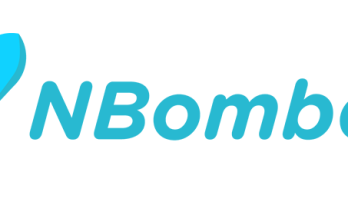Table of Contents
In the digital age we live in, web applications are at the heart of business operations, from processing financial transactions to interacting with customers. But how do these applications communicate with each other effectively and efficiently? One of the answers to this question is represented by webhooks, a fundamental mechanism for ensuring communication between different applications.
However, with the growing importance of webhooks in our digital infrastructure, it's vital that we understand the importance of keeping our webhooks secure and the measures needed to do so.
What is a Webhook?
A webhook is a communication mechanism that synchronizes between different applications over HTTP. Basically, an application can register to receive notifications from another application when a specific event occurs. For example, an e-commerce application might notify an inventory management application whenever a new order is placed. This process is very different from traditional API requests, where the requesting application sends a request and waits for an immediate response. With webhooks, the data flow is initiated by the notifying application, not the one receiving the notification.
Differences between Web API and Webhooks
Web APIs and webhooks serve different purposes in inter-application communication. APIs enable controlled access to specific application functionality, with synchronous requests and responses. Webhooks, on the other hand, provide asynchronous communication where notifications are sent automatically when specific events occur. Both are powerful and versatile tools, but the choice between them depends on the specific communication and interaction needs of the applications involved.
To better understand this concept, let's try to focus on the main differences between a Web API and a webhook by comparing their definition, some fundamental characteristics, and the prevailing methods of use.
Web API
A Web API (Application Programming Interface) is a set of endpoints exposed by an application that allows other applications to interact with it. These endpoints define what operations are available, what data can be requested or sent, and how to communicate.
- Communication. The APIs are based on synchronous requests and responses. When an application wants to get data or perform an action in another application, it sends an HTTP request to the corresponding API endpoint. The receiving application processes the request and returns a response with the requested data or the result of the action.
- Usage. APIs are used to access specific functionality of an application by other applications or services. For example, a social media application could expose an API to allow other applications to post to the platform.
- Control Flow. The application requesting the action or data actively controls the flow of the interaction. Send requests to the API and wait for responses.
Webhooks
A webhook is an asynchronous communication mechanism in which an application registers a URL that it wishes to be notified of when a certain event occurs in another application. The notifier application automatically sends an HTTP request to the registered URL when the event occurs.
- Communication. Webhooks are based on push notifications. The notifying application sends data to the receiving application without the latter actively requesting it. The receiving application reacts to the received data.
- Usage. Webhooks are used to receive automatic notifications about events occurring in another application. For example, a payment application might send a webhook to an order management application each time a payment is completed.
- Control Flow. The notifier application controls the communication flow by sending notifications to registered webhooks. The receiving application processes the data and reacts accordingly.
The importance of Webhook security
Webhook security is a crucial concern as it involves the transmission of sensitive and potentially critical data between applications. A security attack or breach could lead to serious consequences, including loss of data, unauthorized access to resources, and disruption to business operations. That's why it's essential to secure webhooks.
How to secure Webhooks
There are several practices that can be adopted to ensure webhook security:
- Authentication and Authorization. Make sure that only authorized applications can receive and send webhooks. This can be done using unique authentication tokens or digital signatures to verify the authenticity and integrity of webhook requests.
- HTTPS. Always use a secure HTTPS connection for communication between applications. This encrypts the transmitted data, reducing the risk of malicious interceptions.
- Data validation. Thoroughly verify data received via webhooks to avoid injecting malicious or harmful data into the receiving application.
- Event Control. Clearly and precisely define the events that can trigger the webhook and limit the sensitive events that can be notified.
- Monitoring and logging. Implement monitoring and logging mechanisms to track webhook activity and detect any anomalies or suspicious activity.
- Regular Updates. keep the libraries and technologies used to manage webhooks up to date, in order to benefit from the latest security fixes.
- Security proofs and tests. Regularly subject webhooks to security tests, including penetration tests, to identify and fix any vulnerabilities.
For further guidance on these topics and how to properly implement them, it's strongly advised to check out a good Webhook Security guide.
Conclusions
Webhooks are a crucial element in the modern web application ecosystem, enabling asynchronous and efficient communication between different systems. However, with this power also comes the responsibility of ensuring the security of the information transmitted through them. By following recommended security practices, businesses can reduce the risk of a breach and ensure that their digital infrastructure is robust and secure enough to face possible threats from afar.



